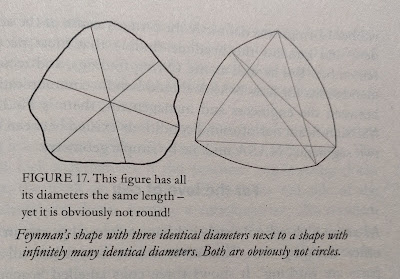More than just O-rings.
When the space shuttle Challenger exploded shortly after launch on 28th Jan 1986, killing all the seven people onboard, a Presidential Commission was formed to investigate the disaster, it was headed Neil Armstrong, Sally Ride (The first woman in space), and none other than Richard Feynman (Nobel prize winner physicist).
The Challenger exploded because of a leak from one of the solid rocket boosters. Each weighed around 500 tonnes, used metal as fuel: they burned aluminum.
Once the fuel was spent at an altitude of over 40 kilometers, boosters got jettisoned by the shuttle and eventually deployed a parachute so they would splash down the Atlantic Ocean. Re-use was the name of the shuttle game, So NASA would send boats out to collect the boosters and take them off to be reconditioned and refueled for the next take-off.
As the booster slammed into the ocean, the boosters were basically empty tubes. They were built with a perfectly CIRCULAR cross-section, but the impact could distort them slightly and added stress during the transportation. They were dismantled into four sections, checked to see how distorted they were, reshaped into perfect circles, and put back together. Rubber gaskets called O-rings were placed between the sections to provide a tight seal (we have the same gaskets in LPG cylinders).
It was these O-rings that failed during the launch of Challenger, allowing hot gases to escape from the boosters and start the chain of events that lead to that disaster.
Famously, during the investigation, Richard Feynman demonstrated how the O-rings lost their elasticity at low temperatures. But Feynman also uncovered a second problem with the seals between the booster sections. Checking if a cross-section of a cylinder is still circular is not that easy. For the boosters, the procedure for doing this was to measure the diameter in three different places and make sure that all three were equal. But Feynman realized that this was not sufficient.
Feynman recalled as a child seeing in a museum ‘non-circular, funny-looking, crazy-shaped gears’ which remained at the same height as they rotated. Despite not being circles, they always have the same-sized diameter from any direction you wish to measure it. You could make thousands of diametric measurements of a shape of constant widths, such as a Reuleaux triangle, they would all come out exactly the same, despite the shape being very much not circular.
So, if a booster had been distorted into a Reuleaux triangle cross-section, then the engineers would have been able to spot this easily, it might not be visible to the naked eye but still, be enough of distortion to change the shape of the seal.
The final report bears that performance of the rubber O-rings was definitely the primary cause of the accident. But there was a recommendation and 'finding #5': by investigating the team for how the NASA engineering and management team missed a ‘Significant out-of-round conditions existed between the two segments’.
NASA undone by simple geometry.
 |
| Feynman's shape with three identical diameters next to a shape of infinitely many identical diameters. Both are obviously not circles. |
 |
| Kennedy Space Center, Florida - Space Shuttle Challenger launches from launchpad. Pic courtesy - Wikipeida.org. |
 |
| Space Shuttle Challenger explodes shortly after take-off. |
This blog is written based on a chapter from the book "Humble Pi: A Comedy of Maths Errors
Book by Matt Parker"
Book's link - https://www.goodreads.com/book/show/39074550-humble-pi


